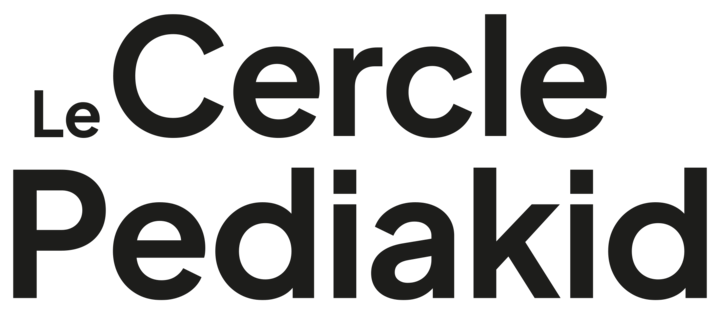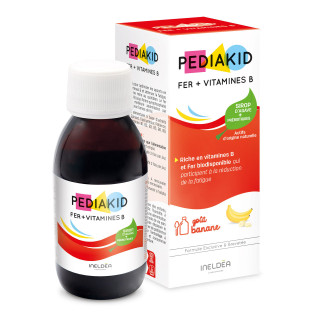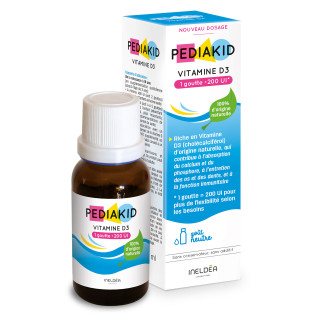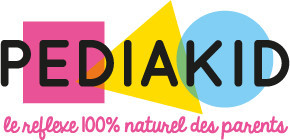When it comes to babies, it is perfectly normal to worry about their wellbeing. The slightest concern in the still delicate baby’s health stresses parents out or makes them panic. This is especially true in the case of a fever as this can sometimes be dangerous for a baby. This article will help you understand the nature of fevers in babies. You will also discover some good practices to comfort your baby and help reduce the temperature.
UNDERSTANDING FEVER IN BABIES
What is a fever ? Is it serious ?
Fever is defined as an abnormal increase in body temperature. It is not really a disease, rather it is a symptom.
It can be explained as the body fighting an infectious agent (bacteria or virus). This is why we often come across fever following vaccination or in a baby with a cold.
It can also occur when a baby is too hot (overly warm coverings, heat from the sun, etc.) or during teething.
In some cases, it is a symptom of a more serious disease such as meningitis, bronchiolitis or other illnesses. This is why it is important to remain vigilant if you child has a hight temperature.
If the fever is temporary and the baby seems well, there is no need for concern. On the other hand, if it lasts longer than 48 hours, precautions need to be taken. This is also true if an increase in temperature is accompanied by other suspicious symptoms such as:
- vomiting
- refusing to feed
- stiff neck
- increased fatigue
- breathing difficulties
The seriousness of a fever also depends on the baby’s age. Fever in infants under the age of six months should never be taken lightly as they do not usually tolerate a high temperature at well.
How to recognize a fever in a baby ?
Certain typical signs can indicate a febrile state in a baby. These include :
- dry skin that is very hot to the touch
- loss of appetite
- a degree of apathy
- paleness
- fatigue or lethargy
- glassy eyes
- crying a lot for no reason
To make sure this is really a fever, all you have to do is take the baby’s temperature.
At which temperature should you consider a baby to have a fever ?
In general, a baby is considered to have a fever of the temperature is higher than 38°C.
Moreover, the danger threshold for a high temperature depends on the thermometer used and the area of the body where the temperature is taken :
- in the case of a rectal thermometer : the threshold is 38.1°C for a baby under the age of three months and 38.5°C for a baby over the age of three months
- in the case of an oral thermometer : the baby is considered to have a fever if the temperature exceeds 38°C
- in the case of the usual application under the arm: the threshold is 37.5°C, whatever the baby’s age.
What should be done if a baby has a fever ?
Other than medical treatment prescribed by a doctor, there are several tips you can follow to ease your baby’s discomfort during a fever episode.
WHAT TO DO TO SOOTHE A FEVERISH BABY
Start by making sure the baby is not too hot. Remover thick clothing and covers but without removing all clothing. A sudden chill can trigger convulsions. It is preferable to opt for light clothing.
To make the baby more comfortable, also make sure that the room is kept cool at around 20°C. The room should be quiet and ventilated.
Give your baby something to drink regularly to prevent dehydration.
When the temperature is too high, pat a towel soaked in slightly cool water on the forehead and on the rest of the body to help the baby feel better.
Finally, make sure you constantly monitor a feverish baby: take the baby’s temperature regularly. If the fever continues and becomes worse, seek medical attention immediately from a doctor or paediatrician.
Recommended medication to reduce fever in babies
Paracetamol is usually used to lower a baby’s temperature. Ibuprofen and aspirin may also be used except in infants under the age of three months.
Remember that whatever the medication, the child’s age and weight must be taken into account to establish the medication dose to be administered. This is why it is essential to get a doctor’s or pharmacist’s opinion.
Natural solutions to reduce fever in babies
Here are some natural solutions to treat a fever in your child, to be used only as a complement to treatment prescribed by a doctor.
These tips only apply to children over the age of six months and you also need to ask doctor’s opinion.
Vegetable juice or broth
A fever is a sign of the body’s immune response. It is therefore helpful to support and boost the immune system to reduce the impact of fever. This is why you should give the child liquidised vegetables. Juices and broths have the advantage of being light, delicious, revitalising, thirst-quenching and also energising.
Potatoes
Placing slices of potato on the soles of the baby’s feet is also effective in reducing a temperature. These need to be replaced on a regular basis.
Aloe vera
To soothe fever in an infant, place slices of aloe vera on the forehead to cool down the infant.
Essential oils
You should always ask your doctor’s advice before opting for essential oils.
For babies over the age of six months, you can soothe a fever with essential oils as long as you ask a healthcare professional for advice before using them. The most suitable are based on ravintsara, lavender, thyme, eucalyptus radiata, niaouli and tea tree.
If the baby shows no sign of allergy or intolerance, you can opt for a foot bath with essential oils to reduce the fever. Simply mix 10 drops of Eucalyptus radiata and 100 grams of salt with hot water then put the baby’s feet in it.
Massaging your baby with a synergistic mixture of essential oils can also be effective. To do so, you could for example mix 15 drops of lavender essential oil, 15 drops of ravintsara essential oil and 5 drops of thyme essential oil mixed in with 7 ml of vegetable oil. This mixture is massaged into the chest and back, six times a day for two days. You only need three drops of the mixture for each massage.
These essential oils have immunostimulant, analgesic and relaxing properties and are therefore perfect for soothing a feverish baby.
In conclusion, there are several effective methods to reduce fever in a baby. To resolve the problem, you need to identify and treat the cause of the fever. A child’s health is both fragile and delicate. Speak to your doctor if you have any concerns.




